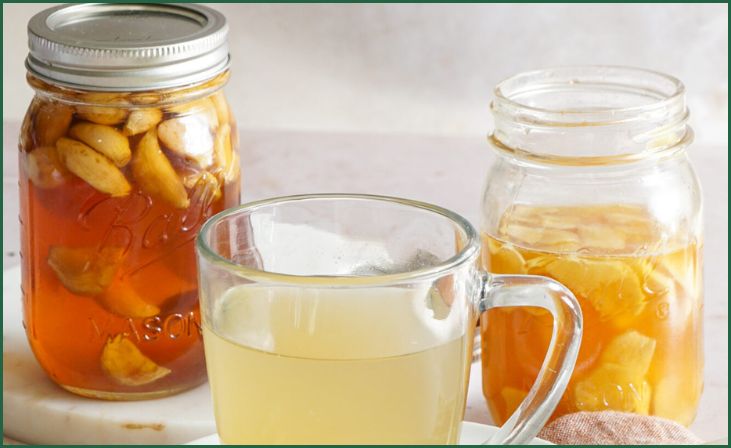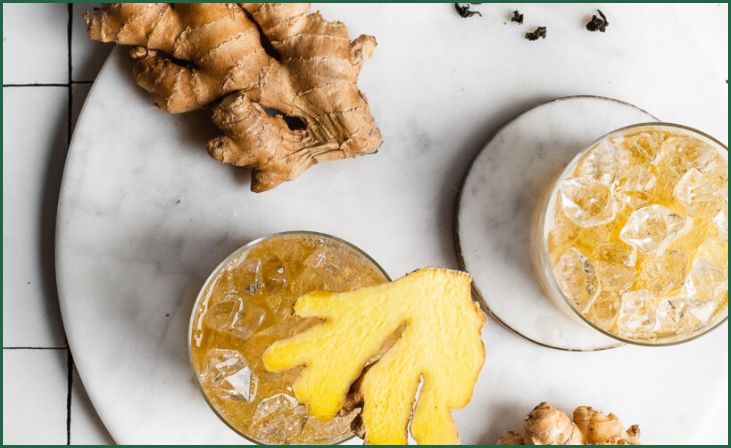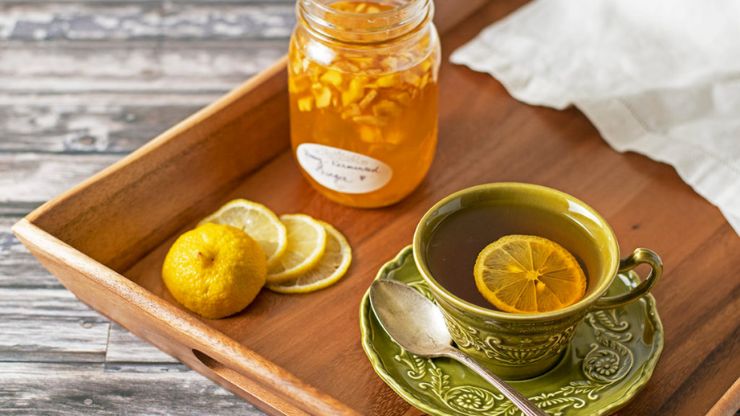In a contemporary landscape where prioritizing wellness has become paramount, Fermented Ginger Honey Tea gracefully steps into the spotlight as a truly delightful elixir. This exceptional brew effortlessly marries health benefits and a palate-pleasing taste profile. Within the confines of this article, we embark on a detailed exploration of the nuanced intricacies that make Fermented Ginger Honey Tea a standout in the realm of wellness beverages.
We aim to furnish you with a comprehensive roadmap, guiding you through the multifaceted aspects of this unique tea. By doing so, we empower you to comprehend the depths of its goodness and cultivate a genuine appreciation, seamlessly incorporating it into your daily routine as a source of both nourishment and pleasure.
Table of Contents
ToggleFermented Ginger Honey Tea Unveiled: A Symphony Of Flavors And Health
The Art of Fermentation: A Transformative Journey

Embark on a fascinating expedition into the heart of Fermented Ginger Honey Tea, where the alchemy of fermentation works its magic. This intricate process elevates simple ingredients to a whole new level, creating a beverage that stands as a powerhouse of nutrients. As we delve into the art of fermentation, witness the metamorphosis that occurs, turning basic components into a concoction that not only tantalizes the taste buds but also nurtures the body from within.
Also Read:- Fermented Elderberry Oxymel
Ginger’s Golden Touch: An Ingredient with Superpowers
Unravel the wonders concealed within the ginger root, a star ingredient that goes beyond mere flavor enhancement. Known for its potent anti-inflammatory properties and digestive benefits, ginger brings a robust and invigorating kick to Fermented Ginger Honey Tea. Join us in exploring the myriad ways in which this humble root contributes not just to the taste but to the overall wellness that this tea promises.
The Sweet Symphony: Honey’s Role in Wellness
In this segment, we shine a spotlight on honey, a sweet nectar that not only enhances the tea’s flavor but also plays a pivotal role in its health benefits. Beyond being a natural sweetener, honey brings antibacterial and antioxidant properties to the mix, creating a sweet symphony that’s not just delightful to the palate but also a boost to your well-being. Dive into the synergy of honey and tea, where sweetness meets health in every sip.
Crafting the Perfect Blend: Meticulous Artistry Unveiled

Discover the meticulous process behind the scenes, where artisans craft Fermented Ginger Honey Tea with precision and care. Each step is a dance of flavors and health benefits, ensuring that every sip is a harmonious blend. From the careful selection of ingredients to the controlled fermentation process, witness the artistry that goes into creating a tea that transcends the ordinary. This section unravels the secrets behind the perfect blend, inviting you to appreciate the craftsmanship that goes into each cup.
Don't just scroll, subscribe!
BuzzTrail's unique web-stories are the cure for boredom you've been waiting for.
Savoring the Experience: Elevate Your Moments with Fermented Ginger Honey Tea
A Ritual of Wellness: Transforming Sipping into Self-Care

Indulge in the soul-soothing ritual of sipping Fermented Ginger Honey Tea, a practice that transcends the mundane and transforms your daily activity into a mindful moment of self-care. As you cradle the warm cup in your hands, feel the aromatic embrace, and take that first sip, allow the rich infusion to envelop your senses. This ritual isn’t just about tea; it’s about embracing a moment of tranquility, a pause in your day dedicated to nurturing your well-being. Immerse yourself in the meditative rhythm of sipping, letting the goodness of the tea seep into your body and spirit, creating a daily sanctuary of self-love.
Aroma and Flavor Dance: An Ode to the Senses
Delight in the enchanting symphony of aromas and the intricate dance of nuanced flavors that elevate each cup of Fermented Ginger Honey Tea to a sensorial experience. As the tea leaves unfurl and release their essence, the air becomes a canvas painted with the warm notes of ginger and the sweet whispers of honey. Take a moment to inhale deeply, letting the fragrant bouquet transport you to a realm of pure bliss. With every sip, witness the dance of flavors unfold—a harmonious blend of spicy ginger, the mellow sweetness of honey, and the subtle undertones of fermentation. Let your taste buds revel in the complexity of this brew, making each encounter a celebration of sensory delight.
In savoring the experience of Fermented Ginger Honey Tea, you not only engage in a daily ritual but also embark on a journey of sensory discovery. It’s more than a beverage; it’s an invitation to pause, reflect, and indulge in the richness that each cup brings to your life. So, let the ritual of wellness and the aromatic dance of flavors become a cherished part of your daily routine, a small but significant act of self-love and appreciation.
Also Read:- Fermented Salt Cured Egg Yolks
Conclusion
As we bring our journey through the realms of Fermented Ginger Honey Tea to a close, the unmistakable truth emerges—this brew transcends the ordinary. It’s not merely a beverage; it’s an invitation to embrace a holistic wellness companion that has the power to transform your daily routine.
Fermented Ginger Honey Tea beckons you to elevate your perception beyond a simple drink. Embrace it as a companion on your wellness journey, offering more than just a tantalizing taste. This blend encapsulates the essence of holistic well-being, a fusion of ingredients crafted not just for flavor but for the benefit of your entire being. It goes beyond the conventional role of a beverage, becoming a steadfast ally in your pursuit of a balanced and healthier lifestyle.
Frequently Asked Questions
Q: Is Fermented Ginger Honey Tea easy to make at home?
Q: Is Fermented Ginger Honey Tea easy to make at home?
A: Absolutely! Check our guide for a simple home-brewing process.
Q: What health benefits does ginger offer in the tea?
Q: What health benefits does ginger offer in the tea?
A: Ginger aids digestion, reduces inflammation, and adds a zesty kick to the tea.

